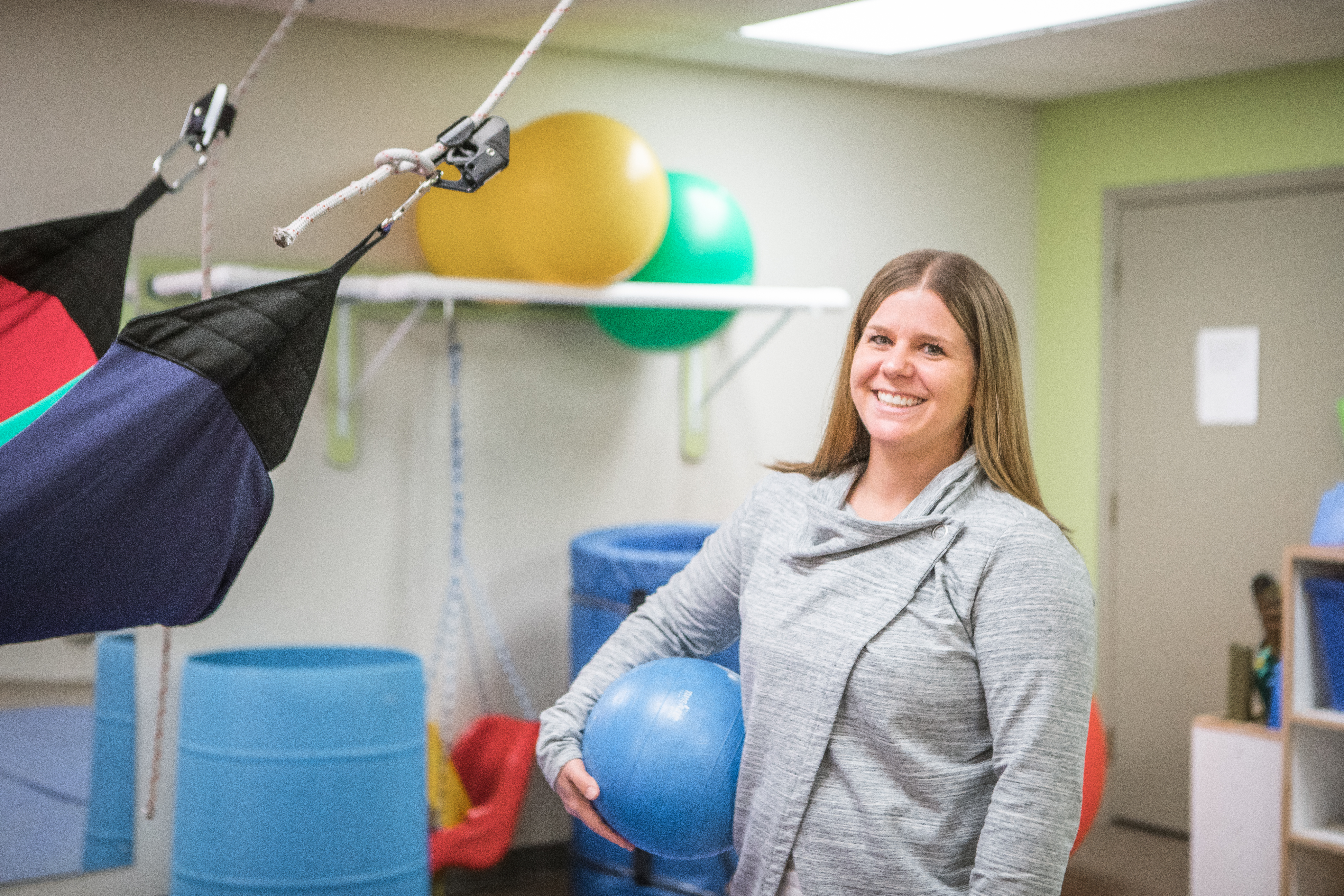
Melissa Stiles, PT, is a Board Certified Pediatric Clinical Specialist and is the Pediatric Rehab Supervisor at St. Peter's Health.
June 23, 2025
Many children go through phases of disliking tooth brushing, struggling with writing, or reacting strongly to changes in their routine. While some of these behaviors may be typical, they can also indicate that a child is experiencing challenges that go beyond the usual ups and downs of growing up. Pediatric occupational therapy (OT) is one approach that can help children navigate these difficulties and develop the skills they need to participate more fully in everyday life.
What is Pediatric Occupational Therapy?
Pediatric occupational therapy focuses on helping children gain independence and confidence in their daily activities, including dressing, eating, learning, social interaction, and play. Occupational therapists work with children who may have developmental delays, physical disabilities, sensory processing differences, emotional regulation difficulties, or other challenges that affect their ability to engage in everyday tasks.
Signs a Child May Benefit from Occupational Therapy
Children might benefit from occupational therapy if they experience difficulties such as:
- Trouble following directions or engaging in structured tasks
- Difficulty with fine motor tasks, like writing, buttoning, or using utensils
- Sensitivity or distress during grooming activities, such as brushing teeth or hair
- Frequent frustration with daily routines or trouble adjusting to changes
- Limited food preferences or difficulty trying new foods
- Challenges in play activities that require coordination or imagination
How Occupational Therapy Helps
Occupational therapists assess a child's functional abilities and use individualized strategies to build skills in areas like:
- Fine motor coordination and handwriting
- Sensory processing and sensory regulation
- Motor planning and balance
- Executive functioning and self-regulation
- Daily living skills, such as dressing or feeding
A key component of pediatric occupational therapy (OT) is sensory integration therapy, particularly for children who struggle to process sensory information. These children might be overly sensitive to certain textures or sounds, or they might seek out intense sensory input. Through structured, play-based activities, therapists help children engage with different types of sensory input in a way that supports nervous system regulation and more adaptive responses.
Techniques may include:
- Deep pressure input (such as weighted blankets or compression garments)
- Movement activities (like swinging or balancing)
- Exposure to different textures through play
This kind of sensory support can be beneficial for children with Sensory Processing Disorder (SPD), Autism Spectrum Disorders, Attention Deficit Disorders, developmental coordination disorders, or other conditions that affect learning and behavior.
Support for Feeding Challenges
Feeding issues can also be addressed through occupational therapy. Therapists can help children who have difficulty with oral motor skills or who are sensitive to food textures, smells, or temperatures. Interventions may focus on increasing food tolerance, improving muscle coordination, and supporting positive mealtime routines.
In these cases, occupational therapists may collaborate with pediatricians, speech-language pathologists, nutritionists, lactation consultants, or other specialists to provide a well-rounded approach to care.
When to Seek Help
Every child develops at their own pace, but if a child consistently struggles with tasks that seem typical for their age or if daily routines cause significant distress, it may be helpful to speak with a pediatrician. Early support through occupational therapy can make a meaningful difference in helping children participate more fully and comfortably in their lives.

